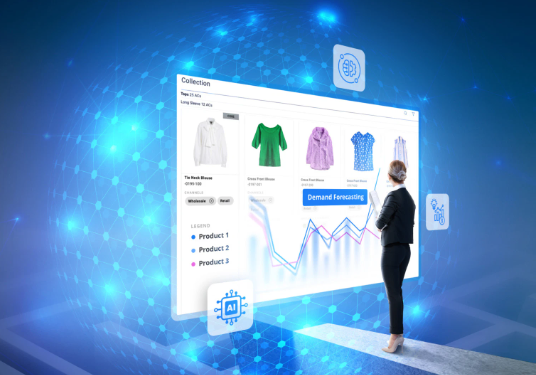
To a retailer, the future is frequently unpredictable. Will your new line of summer dresses succeed, or will you be forced to wear floral dresses long after the mercury drops? Will an unexpected heat wave cause your inventory of bottled water to fly off the shelves or leave you with an excess that is just collecting dust?
Inventory forecasting software can serve as your personal retail crystal ball in this situation. It does not read fortunes or forecast lottery numbers, but it does something considerably more useful: it creates a clear picture of the demand for your products in the future. Inventory forecasting software gives you the confidence to handle the risks of retail by examining past sales data, seasonal trends, and even outside variables. With this efficient means in your hand, you can maximize stock levels, steer clear of costly errors, and open the door to increased income. The following are 10 vital roles that inventory forecasting software does for retail operations:
Optimal Stock Levels
When it comes to inventory forecasting software, optimized stock levels are the vital component. The program forecasts each product’s future demand by examining past sales data, seasonal trends, and even outside variables like weather patterns. By doing this, you can make sure that your inventory levels are ideal and that you don’t overstock in order to satisfy client requests. Reduced inventory means reduced risk of expiry for fragile or seasonal goods, cheaper storage expenses, and better cash flow.
Reduced Stockouts and Lost Sales
For a store, running out of a popular item may be terrible. Customers who are not satisfied may decide to do business with someone else and maybe never come back. This is avoided by using stock forecasting software, which foresees any stockouts well in advance. You may make timely reorders to guarantee that your shelves are constantly filled with in-demand goods by using precise projections. This results in more satisfied consumers, more revenue, and a better reputation for the company.
Better Sales and Promotional Planning
Inventory forecasting software may be used proactively to plan for sales and promotions in addition to responding to demand. The program forecasts the effect of impending promotions on inventory levels by examining historical sales data for certain goods or categories during previous promotional periods. This enables you to properly plan your promotions and make sure you have adequate inventory on hand to handle the expected spike in demand.
Improved Cash Flow Management
You can keep a healthy balance between your investment in inventory and cash flow by using inventory forecasting software. You may free up cash for other company requirements by lowering the amount of money locked up in inventory through stock level optimization. This makes it possible to allocate more funds strategically to product development, marketing, and even store growth.
Better Distribution and Allocation
Inventory forecasting software may be a huge help to businesses that own many locations. Based on sales data from each site, the application analyzes demand at specific retail sites. This makes it possible to distribute inventory more effectively throughout your network, guaranteeing that businesses with higher demand have adequate stock while avoiding overstocking slower-moving areas.
Improved Supplier Relationships and Shorter Lead Times
With accurate projections, you may place orders far in advance, allowing your suppliers plenty of time to fulfill them. This strengthens your ties with your suppliers and lowers the possibility of stockouts brought on by unforeseen delays. Furthermore, having a clear understanding of your future requirements enables you to bargain with suppliers for better terms, which may result in lower buying prices.
Improved Demand Planning for Fresh Products
Introducing a new product line can be risky. Inventory forecasting software examines past sales information for related items and market trends to assist reduce risk. In doing so, you may lower the possibility of overstocking or understocking during the critical launch period of your new product by creating a more accurate initial stock prediction.
Data-Driven Decision Making
Intuition and gut instinct are great, but you may make well-informed judgments using real-time data and past patterns by using stock forecasting software. This enables you to acquire a competitive edge in the dynamic retail scene, be more sensitive to changes in the market, and alter your plans fast.
Conclusion
Inventory forecasting software is very essential for retail business in this day and age, when efficiency and data-driven decision-making are critical. Inventory forecasting software has a direct influence on your bottom line by reducing stockouts, improving inventory levels, and enhancing purchasing choices. Higher revenue, better cash flow, and lower carrying costs all help to create a stronger profit margin. This enables you to expand your operations, make more investments in your company, and eventually succeed in the long run.
